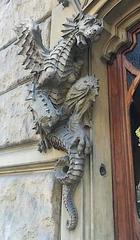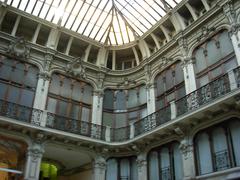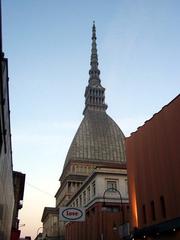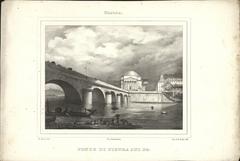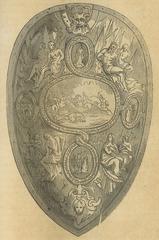Castel Guelfo in Chieri, Italy: Visiting Hours, Tickets, and Historical Sites Guide
Date: 14/06/2025
Introduction: Discover Castel Guelfo’s Historic and Cultural Legacy
Nestled in the scenic Pessione district near Chieri, in the heart of Piedmont, Castel Guelfo stands as a living testament to the region’s medieval fortification systems, noble heritage, and evolving architectural tastes. Dating back to at least the early 11th century, this castle was once a crucial part of the “corona di castelli”—a defensive ring safeguarding Chieri and its vital resources. Over time, Castel Guelfo transformed from a stark military outpost into an elegant country residence, reflecting the changing needs and ambitions of its noble owners. Although privately owned and generally closed to the public, special events such as “Castelli Aperti” open its storied walls, chapel, and landscaped park to visitors eager to immerse themselves in Piedmontese history and culture. This guide provides a comprehensive overview of Castel Guelfo’s origins, architecture, visitor access, and nearby attractions, ensuring an enriching experience for anyone planning a visit. (castelguelfopessione.it; Castelli Aperti; Carreum Potentia)
Table of Contents
- Origins and Early History
- Medieval and Renaissance Significance
- Noble Residence and Romantic Transformation
- Architectural Features
- Notable Owners and Cultural Impact
- Role in Regional Development
- Visiting Castel Guelfo: Hours, Tickets, and Accessibility
- Travel Tips & Nearby Attractions
- Visuals and Media
- Frequently Asked Questions (FAQ)
- Plan Your Visit
- References
Origins and Early History
Castel Guelfo’s earliest mention dates to 1029, when Bianca di Torino donated the property to the monks of San Salvà di Santena, underlining its initial ecclesiastical ties and strategic value (castelguelfopessione.it). Situated within the powerful medieval commune of Chieri, Castel Guelfo formed part of the “corona di castelli”—a network of fortresses including Fontaneto, Mosi, Mosetti, Ponticelli, Arignano, Moriondo, Pavarolo, Montaldo, and Bardassano—tasked with defending key routes and resources.
During its early centuries, Castel Guelfo functioned primarily as a utilitarian stronghold. Its austere design prioritized defense and storage, providing a secure refuge and safeguarding provisions for local populations during times of military threat.
Medieval and Renaissance Significance
By the 14th century, Castel Guelfo had assumed much of the form seen today. Defensive features included high walls, a moat, angular turrets (bertesche), and a prominent entry tower. The castle’s rural location made it a strategic outpost, monitoring the approaches to Chieri and defending routes toward the fertile plains. Ownership changed hands among notable families—including the Bertone, Corsando, and Biscaretti—reflecting the era’s feudal dynamics and the broader Guelph-Ghibelline conflicts. The name “Castel Guelfo” itself is believed to reference the Guelph political faction, emphasizing the castle’s role in regional power struggles (Carreum Potentia).
Noble Residence and Romantic Transformation
From the 17th to the 19th centuries, Castel Guelfo underwent a remarkable transformation, mirroring Piedmont’s shift from feudal unrest to stability and refinement. The Baudi counts of Vesme—prominent landowners and cultural patrons—oversaw extensive renovations. Defensive elements were softened with Gothic Revival details, and the grounds were reimagined as a picturesque English-style park. Interiors were updated for comfort, and a grand tree-lined avenue was added, although this entrance is no longer in use today. The castle’s chapel, built after 1860, and other romantic features reflect the era’s fascination with medieval heritage (castelguelfopessione.it).
Architectural Features
Castel Guelfo’s architecture embodies its layered history:
- Defensive Walls & Moat: Original medieval high walls, moat, and angular turrets remain.
- Entry Tower & Portal: A stone and brick portal marks the main entrance, topped by a striking tower.
- Chapel: Constructed in the late 19th century, the chapel displays three naves, wooden trusses, stucco columns, and terracotta decorations inspired by local religious architecture.
- Ghiacciaia (Icehouse): This domed, earth-covered structure stored ice and food, exemplifying the castle’s historic role in rural logistics.
- Park and Oratory: The landscaped park features a lake, an oratory, and whimsical elements such as a turret with a spiral staircase above a stream.
Notable Owners and Cultural Impact
The Baudi di Vesme family, especially Count Secondo Marco di Vesme, left a profound mark on Castel Guelfo. Count di Vesme, a renowned jurist and historian, fostered the castle’s transformation into a comfortable and culturally significant residence. The Romantic restoration coincided with a regional revival of medieval and Gothic forms, also seen in the construction of Turin’s Borgo Medievale. Artistic representations by Enrico Gonin further popularized Castel Guelfo’s image as a historical and picturesque site (castelguelfopessione.it).
Role in Regional Development
As a key bastion of the Chieri defensive network, Castel Guelfo protected the economic vitality of a major textile and trade center (audiala.com). Its later adaptation as a noble villa illustrates changing land use and social hierarchies in Piedmont, while its preserved features offer a tangible link to centuries of regional history.
Visiting Castel Guelfo: Hours, Tickets, and Accessibility
Opening Hours: Castel Guelfo is generally closed to the public, but opens for special events, most notably during the “Castelli Aperti” program (April to October).
Tickets: Pricing for special openings is typically €7 for adults, €4 for seniors and students, and free for children under 12. Group and educational tours may be arranged by appointment.
Accessibility: While some areas remain challenging due to historic architecture, recent efforts have improved access. Visitors with mobility needs should inquire in advance.
Guided Tours and Events: Guided tours and cultural events are often offered during open days. Check the Castelli Aperti website or the castle’s official channels for up-to-date information.
Travel Tips & Nearby Attractions
- Getting There: Castel Guelfo is about 20 km southeast of Turin, accessible by car via SP141/SP12 or by bus from Chieri with a short walk from the Pessione stop.
- Accommodation: Chieri and Turin offer a range of hotels, B&Bs, and luxury stays.
- Dining: Enjoy Piedmontese cuisine, especially agnolotti pasta and Barolo wine, at local trattorias.
- Nearby Sites: Explore Chieri’s medieval center, the Martini & Rossi Museum, and the Borgo Medievale in Turin.
Visuals and Media
View virtual tours and photo galleries on the official Castel Guelfo website and the Audiala app, featuring immersive images of the castle’s interiors, gardens, and notable features.
Frequently Asked Questions (FAQ)
Q: When is Castel Guelfo open to the public?
A: Only during special events like “Castelli Aperti.” Check event listings for precise dates and times.
Q: How do I purchase tickets?
A: Tickets are released for special openings via event organizers or official websites. Advance booking is recommended.
Q: Is the site accessible to visitors with disabilities?
A: Some areas are accessible; contact organizers for details on accommodations.
Q: Are guided tours available?
A: Yes, during special events and by appointment.
Q: What else can I see nearby?
A: Chieri’s historic town center, other castles in the network, and Turin’s museums and architectural gems.
Plan Your Visit
To make the most of your trip, plan ahead by consulting the Castelli Aperti website, local tourism offices, or the Audiala app for the latest information on tours, events, and travel updates. Pair your castle visit with local wine tastings, regional cuisine, and explorations of nearby historical sites.
References
- Castel Guelfo - Historical Overview (castelguelfopessione.it)
- Castelli Aperti - Castel Guelfo
- Carreum Potentia - Il Castelguelfo di Pessione Chieri
- Audiala - Chieri Historical Sites

